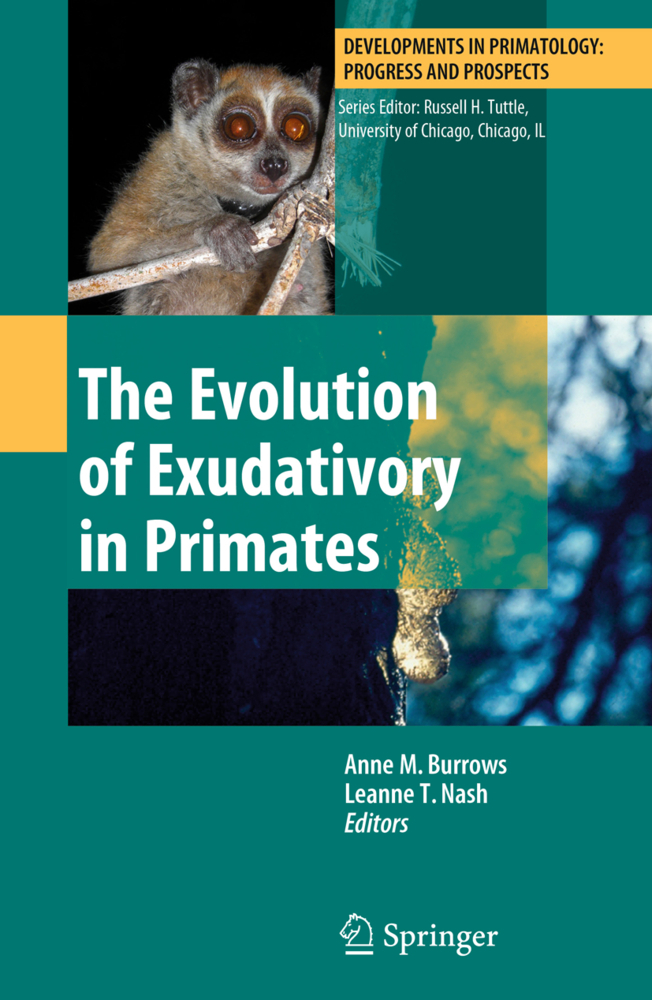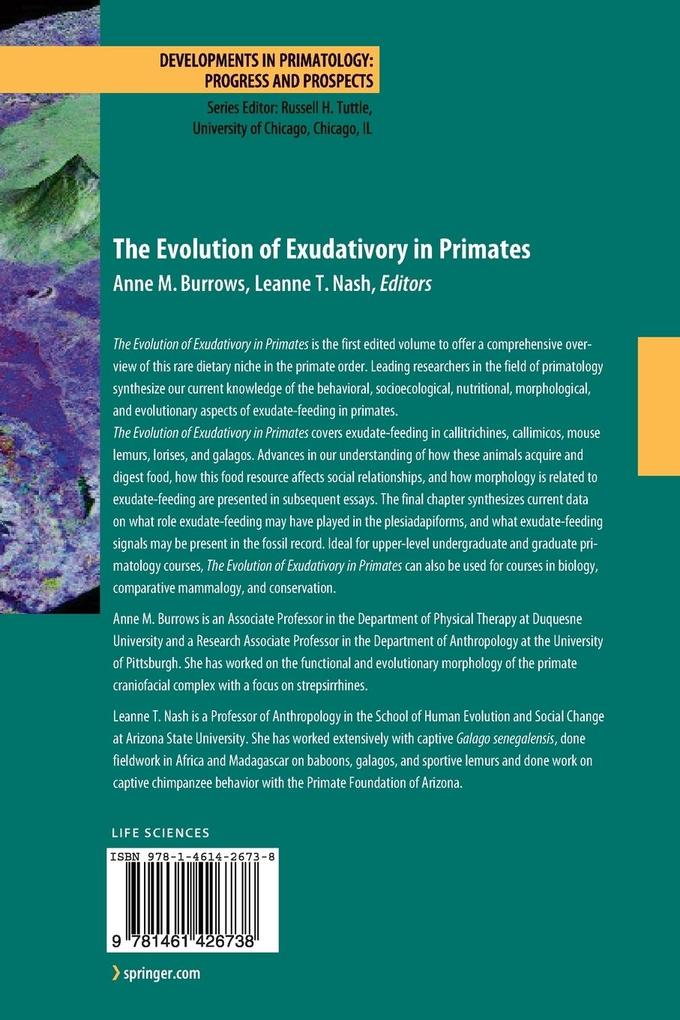Bücher versandkostenfrei*100 Tage RückgaberechtAbholung in über 100 Filialen

Zustellung: Sa, 25.10. - Di, 28.10.
Versand in 2 Tagen
VersandkostenfreiBestellen & in Filiale abholen:
This volume covers aspects of primate exudativory, one of the least common dietary niches among primates. While all primates are generally omnivorous animals, most species, depending on body size, acquire the majority of their energy from fruit, leaves or insects and the majority of their protein from insects or leaves. However, some specialize their caloric intake around the acquisition, processing, and break-down of exudates, the saps and gums produced by trees in response to mechanical or insect damage. Compared to leaves, insects or fruits, these compounds have a unique combination of challenges to the dentition for acquisition and processing and to the gut for digestion. This volume brings together our current knowledge on the morphological, physiological, and evolutionary aspects of being a primate exudativore and to fit these into an evolutionary context. Included in this work are comparisons to marsupial exudates-feeders and the chemical characteristics of exudates.
I first became involved in research into primate behavior and ecology in 1968, over 40 years ago, driven by a quest for a better understanding of the natural context of primate evolution. At that time, it was virtually unknown that primates can exploit exudates as a major food source. I was certainly unaware of this myself. By good fortune, I was awarded a postdoctoral grant to work on lemurs with Jean-Jacques Petter in the general ecology division of the Muséum National d'Histoire Naturelle in Brunoy, France. This provided the launching-pad for my first field study of lesser mouse lemurs in Madagascar, during which I gained my initial inklings of exudate feeding. It was also in Brunoy that I met up with Pierre Charles- Dominique, who introduced me to pioneering observations of exudate feeding he had made during his field study of five lorisiform species in Gabon. This opened my eyes to a key feeding adaptation that has now been reported for at least 69 primate species in 12 families (Smith, Chap. 3) - almost 20% of extant primate species. So exudativory is now firmly established as a dietary category for p- mates, alongside the long-recognized classes of faunivory (including insectivory), frugivory, and folivory. Soon after I encountered Charles-Dominique, he published the first synthetic account of his Gabon field study in a French language journal (Charles-Dominique 1971).
Inhaltsverzeichnis
Introduction: Advances and Remaining Sticky Issues in the Understanding of Exudativory in Primates. - Nutritional and Digestive Challenges to Being a Gum-Feeding Primate. - Exudativory in Primates: Interspecific Patterns. - The Ecology of Exudate Production and Exudate Feeding in Saguinus and Callimico. - Influences on Gum Feeding in Primates. - Gummivory in Cheirogaleids: Primitive Retention or Adaptation to Hypervariable Environments? . - Seasonality in Gum and Honeydew Feeding in Gray Mouse Lemurs. - Comparative Ecology of Exudate Feeding by Lorises (Nycticebus, Loris) and Pottos (Perodicticus, Arctocebus). - Exudativory and Primate Skull Form. - A Comparative Analysis of the Articular Cartilage in the Temporomandibular Joint of Gouging and Nongouging New World Monkeys. - Searching for Dental Signals of Exudativory in Galagos. - A Guide to Galago Diversity: Getting a Grip on How Best to Chew Gum. - Tongue Morphology in Infant and Adult Bushbabies (Otolemur spp.). - Adaptive Profile Versus Adaptive Specialization: Fossils and Gummivory in Early Primate Evolution.
Produktdetails
Erscheinungsdatum
06. November 2012
Sprache
englisch
Auflage
2010
Seitenanzahl
328
Reihe
Developments in Primatology: Progress and Prospects
Herausgegeben von
Anne M. Burrows, Leanne T Nash
Illustrationen
XXII, 306 p.
Verlag/Hersteller
Produktart
kartoniert
Abbildungen
XXII, 306 p.
Gewicht
499 g
Größe (L/B/H)
235/155/18 mm
ISBN
9781461426738
Entdecken Sie mehr
Pressestimmen
From the reviews: "Exudativory, or exudate-feeding, is a dietary category that is remarkably prevalent among primates. ... Morphologist Burrows (Duquesne) and primatologist Nash (Arizona State) have compiled 14 chapters by 29 contributors covering all aspects of exudativory, including nutrition, digestion, ecology, evolution, and morphology (skull, temporomandibular joint, teeth, hands, feet, nails, and tongue). ... Summing Up: Recommended. Upper-division undergraduates through professionals in primatology, biological anthropology, and zoology." (E. J. Sargis, Choice, Vol. 48 (6), February, 2011) "This book takes a broad perspective and reviews the state of the art of our knowledge on primate exudativory from different view-points. ... the book will be of interest and appeal to primate ecologists and evolutionary biologists, and to anthropologists and mammalogists interested in feeding strategies and adaptations. I can highly recommend this book to everyone." (Eckhard W. Heymann, Folia Primatologica, Vol. 82, 2011) "Book edited by Anne M. Burrows and Lean T. Nash ... is based on a symposium held at the 22nd Congress of the International Primatological Society in Edinburg in 2008. ... the book certainly stimulates interesting thoughts and will inspire further in-depth studies on exudativory in primates and other taxa. I do recommend this ... book for those interested in primate ecology, functional morphology, and evolution. It will certainly be the major reference on primate exudativory ... ." (Melanie Dammhahn, International Journal of Primatology, Vol. 33, 2012)
Bewertungen
0 Bewertungen
Es wurden noch keine Bewertungen abgegeben. Schreiben Sie die erste Bewertung zu "The Evolution of Exudativory in Primates" und helfen Sie damit anderen bei der Kaufentscheidung.










